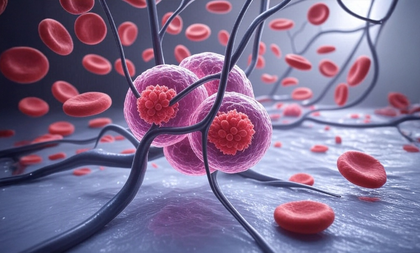Tiny metal particles show potential in targeting cancer cells: Study
By IANS | Updated: October 25, 2025 12:00 IST2025-10-25T11:58:18+5:302025-10-25T12:00:20+5:30
New Delhi, Oct 24 Researchers have developed microscopic metal particles that can kill cancer cells while sparing healthy ...

Tiny metal particles show potential in targeting cancer cells: Study
New Delhi, Oct 24 Researchers have developed microscopic metal particles that can kill cancer cells while sparing healthy tissue, offering a potential new direction for more targeted and less toxic cancer treatments.
The study by the team from the Royal Melbourne Institute of Technology (RMIT) in Australia remains at the cell-culture stage and has not been tested in animals or humans, Xinhua news agency reported.
However, it suggests a new strategy for designing cancer treatments that exploits cancer's own weaknesses.
The international team led by RMIT researchers created tiny particles, known as nanodots, from molybdenum oxide -- a compound based on a rare metal called molybdenum. It is often used in electronics and alloys.
In tests, the particles killed three times more cervical cancer cells than healthy cells within 24 hours, without the need for light, unusual for technologies that rely on oxidative stress, according to the study published in the journal Advanced Science.
"Cancer cells already live under higher stress than healthy ones. Our particles push that stress a little further, enough to trigger self-destruction in cancer cells, while healthy cells cope just fine," said Zhang Baoyue, first author from the RMIT School of Engineering.
"The result was particles that generate oxidative stress selectively in cancer cells under lab conditions," Zhang said.
Most cancer treatments affect both cancerous and healthy tissue, but technologies that selectively stress cancer cells could enable gentler, more targeted therapies, researchers said.
They added that these particles are made from common metal oxide instead of costly or toxic noble metals like gold or silver, making them likely cheaper and safer to develop.
Disclaimer: This post has been auto-published from an agency feed without any modifications to the text and has not been reviewed by an editor
Open in app